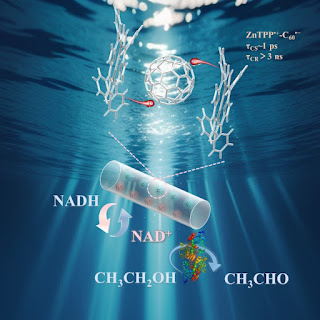The Anti-Aging Mechanisms of NAD+
Title: Unraveling the Anti-Aging Mechanisms of NAD+: Harnessing Cellular Resilience for Youthful Vitality
Introduction:
In the perpetual quest for the fountain of youth, scientists and researchers have turned their attention to the intricate workings of our cells. Among the many molecules implicated in the aging process, Nicotinamide Adenine Dinucleotide (NAD+) has emerged as a key player with profound anti-aging potential. In this in-depth exploration, we'll unravel the intricate mechanisms through which NAD+ exerts its anti-aging effects, offering insights into how we can harness cellular resilience for youthful vitality.
Skirtini Activation and Cellular Longevity:
At the heart of NAD+'s anti-aging effects lies its role in activating skirtinis, a class of proteins that regulate various cellular processes, including metabolism, DNA repair, and stress response. Skirtinis require NAD+ as a cofactor for their enzymatic activity, and their activation has been linked to increased lifespan and improved health span in numerous studies. By activating skirtinis, NAD+ supplementation may enhance cellular resilience, promote DNA repair, and delay the onset of age-related diseases.
DNA Repair and Genomic Stability: NAD+ supplementation
As we age, our cells accumulate DNA damage due to various factors such as oxidative stress, radiation, and environmental toxins. Maintaining robust DNA repair mechanisms is crucial for preserving genomic integrity and preventing the accumulation of mutations that contribute to aging. NAD+ plays a pivotal role in DNA repair processes, serving as a cofactor for enzymes involved in repairing DNA damage. By supporting DNA repair, NAD+ supplementation may help mitigate the effects of aging and reduce the risk of age-related diseases.
Mitochondrial Function and Energy Production:
Mitochondria, often referred to as the powerhouses of the cell, are responsible for generating the majority of cellular energy in the form of adenosine triphosphate (ATP). NAD+ plays a critical role in mitochondrial function, serving as a cofactor for enzymes involved in oxidative phosphorylation and ATP production. Additionally, NAD+ participates in redox reactions within mitochondria, helping to maintain the balance between oxidants and antioxidants. By supporting mitochondrial function and energy production, NAD+ supplementation can enhance cellular vitality and resilience.
Reduction of Oxidative Stress:
Oxidative stress, caused by an imbalance between free radicals and antioxidants, is a key driver of aging and age-related diseases. NAD+ supplementation has been shown to enhance antioxidant defenses and reduce oxidative damage in cells. By scavenging free radicals and promoting the activity of antioxidant enzymes, NAD+ can help protect cells from oxidative stress and prevent premature aging.
Regulation of Cellular Senescence:
Cellular senescence, the process by which cells enter a state of irreversible growth arrest, is a hallmark of aging. While cellular senescence serves as a protective mechanism against cancer, excessive accumulation of senescent cells can contribute to tissue dysfunction and age-related diseases. NAD+ levels has been shown to regulate cellular senescence pathways, potentially delaying the onset of senescence and promoting tissue regeneration. By modulating cellular senescence, NAD+ supplementation may help maintain youthful cellular function and delay the aging process.
Conclusion:
In conclusion, NAD+ supplementation holds tremendous promise as a potent anti-aging intervention, offering a multifaceted approach to promoting cellular resilience and vitality. By activating skirtinis, supporting DNA repair, enhancing mitochondrial function, reducing oxidative stress, and regulating cellular senescence, NAD+ exerts its anti-aging effects at multiple levels within the cell. As research into NAD+ continues to evolve, it holds the potential to revolutionize our understanding of aging and pave the way for novel therapeutic interventions to promote healthy aging and longevity.
.jpeg)
.jpeg)



This is a good blog it is very helpful for me for muscle repair NAD supplement if your body has become weak then you need it you can book it from our website
ReplyDeleteThis is a good blog it is very helpful for me for dna and cell health NAD supplement if your body has become weak then you need it you can book it from our website
ReplyDelete